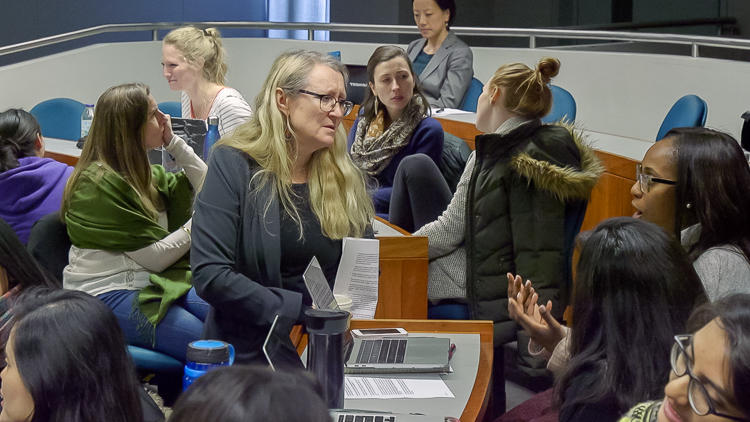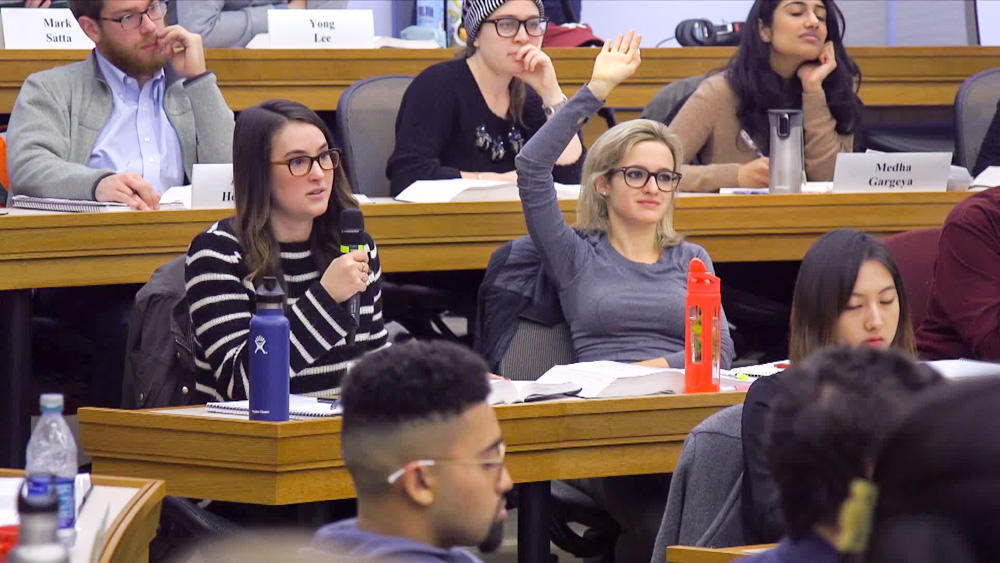To invite quieter students into the conversation and afford students a chance to process and articulate their thoughts before sharing them with the whole group, many instructors intersperse think-pair-shares into their lectures. Using routine, structured think-pair-share activities, Kegan gives every student an intellectual partner with which to react and respond to material in real-time. Such exercises also help to break up the potential monotony of the large-enrollment lecture course while ensuring that all students share in the thinking process instead of the outspoken few.
Interspersing pair-shares throughout lectures
Instructor
Robert Kegan, William and Miriam Meehan Research Professor in Adult Learning and Professional Development
Student Group
Graduate
School
Harvard Graduate School of Education
Course
Adult Development
Group Size
~200 students
- Pose a thought-provoking question to elicit a range of opinions on a topic. After giving students a couple of (timed) minutes of think-time, invite students to turn to a neighbor to discuss their opinions before asking a couple of volunteers to share out to the whole group.
- Invite listeners to assess and challenge speakers’ understandings. Especially with questions for which students may have different interpretations, think-pair-shares provide opportunities for gentle disagreement and strengthening underdeveloped thinking.
- For efficiency and structure, indicate who will go first in each group. Light-hearted tests for who starts such as “the person whose birthday is closest to today” or “the person with the brighter colored shirt” allow students to quickly jump into the conversation while getting comfortable with one another.
- Owens & Tanner outline the neural processes that come together in think-pair-share activities to promote learning: release of neurotransmitters, formation of neural networks to support future retrieval of material, and potential reduction in cortisol levels (2017)
- According to Tanner, when students talk in lectures, this enriches the learning experience, transforms the dynamics of a large lecture class, externalizes student thinking, and supports a collaborative environment (2009)
- Carleton College provides an overview of the “Think-Pair-Share” featuring a video of a professor demonstrating the practice in class
- The Chicago Center for Teaching at the University of Chicago provides an overview of “Small Group Work” including numerous variations of think-pair-shares




